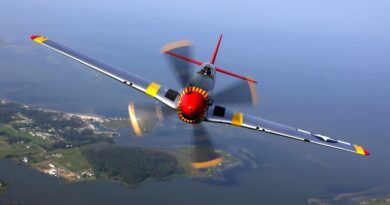Flight School: What You Need to Know
Ever dreamt of soaring through the skies? Flight school can turn that dream into reality. But what should you expect? From costs to training processes, lets break it down.
What is Flight School?

Flight school teaches you how to fly an airplane. it’s where you learn both ground school and flight training. Ground school covers the theory you need, like navigation and safety. Flight training is where you actually take to the skies.
According to the Federal Aviation Administration (FAA), there are over 600,000 registered pilots in the U.S. that’s a lot of people who share the skies! But what does it take to join them?
How Much Does Flight School Cost?

Cost is a big question for many aspiring pilots. Flight school can range from $10,000 to $50,000, depending on several factors:
- Type of License: Private, commercial, or instructor licenses have different costs.
- Location: Schools in urban areas may charge more than those in rural areas.
- Flight Hours: More flight hours mean higher costs. Youll need a minimum of 40 hours for a private license.
Many schools offer financing options. Always ask about scholarships, too! They can help reduce your costs and make flying more accessible.
What Do You Learn in Flight School?

Flight training is divided into two main sections: ground school and flight lessons. Lets explore both.
Ground School: What to Expect
Ground school is like the classroom part of learning to fly. Heres what youll cover:
- Aerodynamics: Understand how planes fly. Ever notice how birds tilt their wings? that’s aerodynamics in action!
- Weather: Knowing weather patterns helps you plan safe flights.
- Navigation: Learn how to read charts and use instruments. Imagine using a map on a road trip; it’s similar!
- Regulations: The FAA has rules to keep everyone safe. Knowing these is crucial.
Ground school usually involves classes, study materials, and sometimes simulators. Simulators are a great way to practice flying without leaving the ground.
Flight Lessons: Your Time in the Air
After ground school, youll start your flight lessons. Here, youll work one-on-one with an instructor. Expect to do the following:
- Pre-Flight Checks: Learn how to inspect the plane before taking off.
- Taking Off: Your instructor will guide you as you taxi and lift off.
- In-Flight Maneuvers: Practice turns, climbs, and descents.
- Landing: Landings can be tricky but are essential for every pilot.
Your instructor will provide feedback and help you improve. As you gain confidence, youll take on more responsibility during flights.
Do You Need a Medical Exam?

Yes, you need a medical exam to become a pilot. The FAA requires this to ensure you are fit to fly. The exam checks your vision, hearing, and overall health.
Most people pass the exam without issues. However, if you have a medical condition, it’s best to discuss it with an aviation medical examiner. They can provide guidance specific to your situation.
What Are the Different Types of Pilot Licenses?
There are several licenses you can earn at flight school. Each one allows you to do different things.
- Private Pilot License (PPL): Fly for fun and take friends along. You can’t charge for rides.
- Commercial Pilot License (CPL): Get paid to fly. This is for those who want to make flying their career.
- Airline Transport Pilot License (ATPL): Needed to command large aircraft for airlines.
Think about what you want from flying when choosing a license. That will help guide your training path.
What Should You Look for in a Flight School?
Picking the right flight school is crucial to your success. Heres what to consider:
- Accreditation: Make sure the school is FAA-approved.
- Instructors: Look for experienced and certified instructors. Ask about their flying hours and background.
- Fleet: Check the type and condition of the airplanes. Newer planes can enhance your learning experience.
- Location: Choose a location that suits your needs. Some prefer busy airports for real-world experience, while others like quieter airfields.
don’t hesitate to visit schools in person. Speak with instructors and current students. Their experiences can offer valuable insights.
How Long Does It Take to Finish Flight School?
The time it takes to complete flight school varies. On average, it can take:
- Private License: 3 to 6 months if training full-time.
- Commercial License: 6 months to a year, depending on hours logged.
Your schedule will impact this. Some students train part-time while working or studying. The more you fly, the quicker youll progress.
What Are the Job Opportunities After Flight School?
Many people wonder about job prospects after flight school. Here are some options:
- Charter Pilot: Fly passengers or cargo on-demand.
- Flight Instructor: Teach others how to fly.
- Airline Pilot: Fly for commercial airlines with an ATPL.
- Corporate Pilot: Fly executives in private jets.
The aviation industry is growing. A report from the FAA predicts that 18,000 new pilots will be needed in the next decade!
Common Myths About Flight School
There are many myths about flight school that can mislead aspiring pilots. Lets clear up some of the most common:
- Myth: You need to be a math genius. Truth: Basic math is helpful, but you don’t need advanced skills.
- Myth: Flying is too expensive. Truth: There are many financing options and scholarships available.
- Myth: Only young people can become pilots. Truth: People of all ages have successfully completed flight training.
don’t let these myths hold you back from pursuing your dream of flying.
Final Thoughts: Are You Ready to Fly?
Flight school is an exciting journey that opens up a world of possibilities. Whether you want to fly for fun or make it a career, theres a path for you.
Remember to do your research before enrolling. Talk to instructors and current students. The more informed you are, the better your experience will be.
So, are you ready to take the leap? The sky is waiting for you!
For more information on flight schools and training options, visit the FAA’s official website: FAA.gov.



